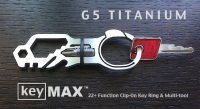SHANGHAI--(BUSINESS WIRE)--Lufax Holding Ltd (�Lufax� or the �Company�) (NYSE: LU), a leading technology-empowered personal financial services platform in China, today announced its unaudited financial results for the fourth quarter and full year ended December 31, 2020.
Fourth Quarter 2020 Financial Highlights
- Total income increased by 5.9% to RMB13,286 million (US$2,036 million) in fourth quarter of 2020 from RMB12,549 million in the same period of 2019.
- Net profit increased by 17.4% to RMB2,847 million (US$436 million) in fourth quarter of 2020 from RMB2,425 million in the same period of 2019.
|
(In millions except percentages, unaudited) |
Three Months Ended December 31, |
� |
� |
|||||
|
� |
2019 |
� |
2020 |
� |
YoY |
|||
|
� |
RMB |
� |
RMB |
� |
USD |
� |
� |
|
|
Total income |
12,549 |
� |
13,286 |
� |
2,036 |
� |
5.9% |
|
|
Total expense |
(8,153) |
� |
(9,106) |
� |
(1,396) |
� |
11.7% |
|
|
Net profit |
2,425 |
� |
2,847 |
� |
436 |
� |
17.4% |
|
|
Net margin |
19.3% |
� |
21.4% |
� |
21.4% |
� |
10.9% |
|
Fourth Quarter 2020 Operational Highlights
Retail credit facilitation business:
- Outstanding balance of loans facilitated increased by 17.9% to RMB545.1 billion (US$83.5 billion) as of December 31, 2020, from RMB462.2 billion as of December 31, 2019.
- Cumulative number of borrowers increased by 17.1% to approximately 14.5 million as of December 31, 2020, from approximately 12.4 million as of December 31, 2019.
- During the fourth quarter of 2020, excluding our consumer finance subsidiary, 74.4% of new loans facilitated were disbursed to the Company�s core segment of small business owners, up from 63.1% in the same period of 2019.
- As of December 31, 2020, outstanding balance of loans facilitated with guarantees from third-party insurance partners accounted for 88.8% of total outstanding balance of loan facilitated, decreased from 95.6% as of December 31, 2019.
- As planned and in line with the Company�s interpretation of the Supreme Court guidelines on Loan Prime Rate pricing announced in August, 2020, Lufax adjusted its Annual Percentage Rates (�APRs�) to ensure that the all-in costs for new borrowers remained below 24%, starting from September 4, 2020. As a result, the Company�s retail credit facilitation revenue take rate1 declined from 10.3% for the fourth quarter of 2019 to 9.1% for the fourth quarter of 2020.
- Despite its reduction of APRs starting from September 2020, the Company has maintained its solid business growth. New loans facilitated increased by 3.2% to RMB132.7 billion (US$20.3 billion) in the fourth quarter of 2020 from RMB128.6 billion in the same period of 2019. High quality borrowers2 contributed to 70.7% of the new loans facilitated in the fourth quarter of 2020 as compared to 57.4% in the same period of 2019.
- Flow rates3 for the total loans the Company had facilitated (excluding legacy products4) were 0.4% in December 2020, as compared to 1.0% in February 2020 during the peak of the COVID-19 pandemic in China. Flow rates for the general unsecured loans the Company had facilitated were 0.5% in December 2020, as compared to 1.0% in February 2020 during the peak of the COVID-19 pandemic in China. Flow rates for the secured loans the Company had facilitated were 0.1% in December 2020, as compared to 0.7% in February 2020 during the peak of the COVID-19 pandemic in China.
- Days past due ("DPD") 30+ delinquency rate5 for the total loans the Company had facilitated (excluding legacy products) improved to 2.0% as of December 31, 2020, from 2.2% as of September 30, 2020. DPD 30+ delinquency rate for general unsecured loans improved to 2.3% as of December 31, 2020, from 2.5% as of September 30, 2020. DPD 30+ delinquency rate for secured loans improved to 0.7% as of December 31, 2020, from 0.9% as of September 30, 2020.
- DPD 90+ delinquency rate6 for the total loans the Company had facilitated (excluding legacy products) improved to 1.2% as of December 31, 2020, from 1.3% as of September 30, 2020. DPD 90+ delinquency rate for general unsecured loans improved to 1.3% as of December 31, 2020, from 1.5% as of September 30, 2020. DPD 90+ delinquency rate for secured loans improved to 0.4% as of December 31, 2020, from 0.5% as of September 30, 2020.
Wealth management business:
- Total number of registered users grew to 46.2 million as of December 31, 2020, from 44.0 million as of December 31, 2019.
- Total number of active investors grew to 14.9 million as of December 31, 2020, from 12.5 million as of December 31, 2019.
- Total client assets grew by 23.0% to RMB426.6 billion (US$65.4 billion) as of December 31, 2020, from RMB346.9 billion as of December 31, 2019.
- Client assets in the Company�s current products (excluding legacy products7) increased by 67.2% to RMB407.2 billion (US$62.4 billion) as of December 31, 2020, from RMB243.6 billion as of December 31, 2019.
- As of December 31, 2020, legacy products accounted for 4.5% of total client assets, down from 29.8% as of December 31, 2019.
- 12-month investor retention rate as of December 31, 2020 remained high at 96.8%, as compared with 93.3% as of December 31, 2019.
- Contribution to total client assets from customers with investments of more than RMB300,000 on the Company�s platform increased to 75.5% as of December 31, 2020, from 73.1% as of December 31, 2019.
- During the fourth quarter of 2020, the annualized take rate8 for current products and services on the Company�s wealth management platform was 31.4 bps, as compared to 21.5 bps during the fourth quarter of 2019.
Mr. Ji Guangheng, Chairman of Lufax, commented, �As the regulatory environment continued to tighten in 2020, we maintained active dialogues with regulators and proactively communicated our corporate mission and business value propositions. Unlike other online consumer lending platforms, Lufax primarily serves micro and small business owners and thus facilitates the growth of the physical economy. Our mission is in full alignment with the policy directions. Additionally, we have lowered our lending costs and increased our overall risk-taking rate. Beyond transitioning to a risk-sharing business model, we also stopped accepting online deposits and shifted our focus to wealth management and technology empowerment. With our advanced technology capabilities, sophisticated management knowhow, strong pricing power, and versatile risk mitigation expertise, we will complete our business transition smoothly and maintain regulatory compliance at the same time.�
Mr. Gregory Gibb, Co-Chief Executive Officer of Lufax, commented, �We remained steadfast in our commitment to driving high quality and profitable growth in the face of regulatory uncertainties and macro headwinds. During the fourth quarter, we bolstered our credit portfolio quality, transitioned to a more sustainable risk-sharing business model, expanded our coverage of core customer segments, and grew our current product clients substantially. As a result, we exceeded our previous guidance, increased our balance of loans facilitated by 17.9% year over year to RMB545.1 billion, and grew our client assets by 23.0% year over year to RMB426.6 billion by the end of 2020. Looking ahead, we plan to remain cognizant of the evolving regulatory landscape while also working diligently to improve our unit economics and optimize our product mix.�
Mr. James Zheng, Chief Financial Officer of Lufax, commented, �We continued to deliver solid financial results in the fourth quarter of 2020, increasing our total income by 5.9% year over year to 13.3 billion. More importantly, during the period, our net profit increased by 17.4% year over year to 2.8 billion, while our net profit margin further expanded to 21.4% from 19.3% in the same period of 2019. Meanwhile, certain factors have affected the pace of our revenue and expense recognition, creating a timing mismatch between our financial and business results. Such factors have impacted our fourth quarter results and will continue to impact our 2021 results going forward. Additionally, these factors will likely result in more quarterly movement and volatility. Whilst our pre-tax net margin is temporarily under pressure due to these factors and price adjustments from September 2020, we have already observed early signs of recovery and expect this trend to continue throughout the remainder of 2021.�
Fourth Quarter 2020 Financial Results
TOTAL INCOME
Total income increased by 5.9% to RMB13,286 million (US$2,036 million) in the fourth quarter of 2020 from RMB12,549 million in the same period of 2019. The Company�s revenue mix changed with the evolution of its business model as it started to gradually bear more credit risks and increased funding from those consolidated trust plans that offered lower funding costs.
-
Technology platform-based income decreased by 8.5% to RMB9,859 million (US$1,511 million) in the fourth quarter of 2020 from RMB10,778 million in the same period of 2019 due to the decrease in retail credit facilitation service fees, partially offset by the increase in wealth management transaction and service fees.
- Retail credit facilitation service fees decreased by 9.9% to RMB9,283 million (US$1,423 million) in the fourth quarter of 2020 from RMB10,299 million in the same period of 2019, mainly due to: (i) an increase in loans funded by consolidated trusts as the Company�s business model continued to evolve; (ii) early repayments by borrowers; and (iii) adjustments in product prices.
- Wealth management transaction and service fees increased by 20.3% to RMB576 million (US$88 million) in the fourth quarter of 2020 from RMB479 million in the same period of 2019. The increase was mainly driven by the year-over-year increase in fees generated from the Company�s current products, partially offset by the year-over-year decrease in fees generated from the Company�s legacy products.
- Net interest income increased by 140.8% to RMB2,333 million (US$358 million) in the fourth quarter of 2020 from RMB969 million in the same period of 2019, mainly as a result of the Company�s increased usage of those trust funding channels that are consolidated by the Company. As of December 31, 2020, the Company�s on-balance sheet loans accounted for 21.7% of its total loan balance under management as compared to 10.4% as of December 31, 2019.
- Guarantee income increased by 341.4% to RMB256 million (US$39 million) in the fourth quarter of 2020 from RMB58 million in the same period of 2019, primarily due to the increase in the loans for which the Company bears credit risk.
- Investment income increased by 4.9% to RMB386 million (US$59 million) in the fourth quarter of 2020 from RMB368 million in the same period of 2019.
TOTAL EXPENSES
Total expenses increased by 11.7% to RMB9,106 million (US$1,396 million) in the fourth quarter of 2020 from RMB8,153 million in the same period of 2019.
-
Sales and marketing expenses increased by 20.5% to RMB4,885 million (US$749 million) in the fourth quarter of 2020 from RMB4,053 million in the same period of 2019.
- Borrower acquisition expenses increased by 22.3% to RMB2,810 million (US$431 million) in the fourth quarter of 2020 from RMB2,298 million in the same period of 2019. The increase was mainly due to the accelerated recognition of amortized selling expenses from loans originated in prior years as the result of early repayment by customers.
- Investor acquisition and retention expenses decreased by 17.5% to RMB227 million (US$35 million) in the fourth quarter of 2020 from RMB275 million in the same period of 2019. The reduction was mainly driven by the Company�s improvements to its investor acquisition and retention efficiency.
- General sales and marketing expenses increased by 24.9% to RMB1,848 million (US$283 million) in the fourth quarter of 2020 from RMB1,480 million in the same period of 2019, primarily due to: (i) the postponement of certain marketing campaigns to the fourth quarter of 2020 as a result of the COVID-19 outbreak; and (ii) the overall increase in marketing efforts to attract borrowers to the Company�s platform in the fourth quarter of 2020 as businesses across China resumed their operations in the period and as the Company restarted its marketing activities.
- General and administrative expenses increased by 47.8% to RMB986 million (US$151 million) in the fourth quarter of 2020 from RMB667 million in the same period of 2019, mainly due to: (i) the reinstatement of employee social security contribution, which was previously suspended during the first three quarters of 2020 following a COVID-19 moratorium issued by the Chinese government; and (ii) higher share-based compensation expenses.
- Operation and servicing expenses increased by 10.6% to RMB1,650 million (US$253 million) in the fourth quarter of 2020 from RMB1,492 million in the same period of 2019, primarily due to: (i) growth in the outstanding balance of loans facilitated; and (ii) increased payment processing expenses as a result of the expanded loan repayment volume. The increase was partially offset by efficiency improvements in the loan approval and collection process as a result of the Company�s utilization of artificial intelligence.
- Technology and analytics expenses decreased by 17.4% to RMB461 million (US$71 million) in the fourth quarter of 2020 from RMB558 million in the same period of 2019, mostly due to improved efficiency.
- Credit impairment losses increased by 1.4% to RMB985 million (US$151 million) in the fourth quarter of 2020 from RMB971 million in the same period of 2019, mainly driven by: (i) increased risk exposure related to loans; and (ii) the increase in loan-related receivables from off-balance sheet loans caused by the COVID-19 outbreak. These factors were partially offset by the year-over-year decrease in asset management impairment losses of financial assets.
- Finance costs decreased by 17.0% to RMB326 million (US$50 million) in the fourth quarter of 2020 from RMB393 million in the same period of 2019, mainly due to the decrease in borrowing costs.
NET PROFIT
Net profit increased by 17.4% to RMB2,847 million (US$436 million) in the fourth quarter of 2020 from RMB2,425 million in the same period of 2019. This increase was partially driven by total income tax expenses in the fourth quarter of 2020, which decreased by 32.4% to RMB1,333 million (US$204 million) from RMB1,971 million in the same period of 2019 due to the decrease in non-tax-deductible items.
EARNINGS PER ADS
Basic and diluted earnings per American Depositary Share (�ADS�) were both RMB1.25 (US$0.19) in the fourth quarter of 2020. In comparison, basic and diluted earnings per ADS were both RMB1.12 in the same period of 2019. Two ADSs represent one of the Company�s ordinary shares.
BALANCE SHEET
The Company had RMB24,159 million (US$3,703 million) in cash at bank as of December 31, 2020, as compared to RMB7,352 million as of December 31, 2019.
Business Outlook
For the first quarter of 2021, the Company expects its new loan sales to be in the range of RMB175 billion to RMB180 billion, client assets to be in the range of RMB385 billion to RMB395 billion, total income to be in the range of RMB14.3 billion to RMB14.6 billion, and net profit to be in the range of RMB4.0 billion to RMB4.2 billion.
For the first half of 2021, the Company expects its new loan sales to be in the range of RMB340 billion to RMB350 billion, client assets to be in the range of RMB375 billion to RMB385 billion, total income to be in the range of RMB28.5 billion to RMB29.3 billion, and net profit to be in the range of RMB7.8 billion to RMB8.0 billion.
These forecasts reflect the Company�s current and preliminary views on the market and operational conditions, which are subject to changes.
Changes in Board of Directors and Management
The Company's board of directors (the "Board") has approved the following changes to the Board�s composition, effective as of January 29, 2021. As a result of these changes, the Board now consists of nine directors, five of whom are independent directors, in compliance with the listing requirements of the NYSE for a majority independent board within one year of the Company�s listing. In addition, the audit committee of the Board and the nomination and remuneration committee of the Board now each consist of three independent directors, in compliance with the listing requirements of the NYSE for these committees to solely consist of independent directors.
- Mr. Rui Li has been appointed as a director of the Company.
- Mr. Yunwei Tang has been appointed as an independent director and as a member of the audit committee of the Board.
- Mr. David Xianglin Li has been appointed as an independent director of the Company.
- Mr. Renjie Li, who had served as the Chairman of the Board and a director of the Company since March 2016, has retired from his positions on the Board and the audit committee of the Board.
- Mr. Guangheng Ji, who previously was Co-Chairman of the Board and Chairman of Lufax Executive Committee, will assume the sole chairmanship of the Board.
- Ms. Sin Yin Tan, who had served as a director of the Company since December 2014, has resigned from her positions on the Board and the nomination and remuneration committee of the Board for personal reasons.
- Mr. Jason Bo Yao, who had served as a director of the Company since December 2014, has resigned from his positions on the Board and the audit committee of the Board for personal reasons.
- Mr. Eddie Siu Wah Law, who had served as a director of the Company since March 2015, has resigned from his positions on the Board and the nomination and remuneration committee of the Board for personal reasons.
- Mr. Peter Jurdjevic, who had served as a director of the Company since July 2020, has resigned from his position on the Board for personal reasons.
- Mr. Jiming Ha, who had served as an independent director of the Company since April 2018, has resigned from his positions on the Board and the audit committee of the Board for personal reasons.
Mr. Rui Li is currently the Finance Director of Ping An Group, overseeing group-wide finance transformation and accounting operations. He serves on the board of various Ping An subsidiaries and associated companies, including Ping An Trust, Ping An Financial Services, HealthKonnect Medical, OneConnect Financial Technology Co., Ltd. (NYSE:OCFT), and others. Mr. Li has over 25 years of professional experience in financial planning, accounting operations, risk management, and business transformation, and has worked at PricewaterhouseCoopers Hong Kong, Deloitte USA, and Deloitte Canada. Mr. Li is a member of the American Institute of Certified Public Accountants and holds the Chartered Global Management Accountant designation. Mr. Li received his master�s degree in business administration from Metropolitan State University, USA, and his PhD in finance from the International School of Management, France.
Mr. Yunwei Tang has served as an independent director for the Universal Scientific Industrial (Shanghai) Co., Ltd., a company listed on the Shanghai Stock Exchange (SSE: 601231), since April 2017, Ping An Healthcare and Technology Company Limited, a company listed on the Hong Kong Stock Exchange (HKG: 01833), since May 2018, and China Jushi Co., Ltd., a company listed on the Shanghai Stock Exchange (SSE: 600176), since May 2019. Mr. Tang served in a number of positions, including lecturer, professor, and assistant to the President and Vice President at the Shanghai University of Finance and Economics from 1984 to 1993, and the President of Shanghai University of Finance and Economics from 1993 to 1999. Mr. Tang obtained his bachelor�s degrees in economics from Shanghai Institute of Finance and Economics in 1968 and Ph.D. degree in economics from Shanghai University of Finance and Economics in 1987.
Mr. David Xianglin Li is currently a professor and faculty co-director of the Masters of Finance Program at Shanghai Advanced Institute of Finance, an associate director of the Chinese Academy of Financial Research at Shanghai Jiao Tong University (the �Academy�), and a director of the Academy�s Risk Management Center and FinTech Research Center. Mr. Li has extensive experience in the finance industry and is a recognized leader in credit derivatives research and risk management. Prior to his current positions, Mr. Li served as the head of enterprise risk methodology and analytics at Prudential Financial from April 2016 to August 2017, the head of modeling at AIG Investments from February 2012 to March 2016, the Chief Risk Officer at China International Capital Corporation Ltd. from May 2008 to January 2012, the head of credit derivative research and analytics at Barclays Capital from June 2004 to April 2008, and the head of credit derivative research and analytics at Citigroup from October 2001 to May 2004. Mr. Li has also served in senior positions at AXA Financial, the RiskMetrics Group/J.P. Morgan, and the Canadian Imperial Bank of Commerce, among others. Mr. Li obtained his bachelor�s degree in mathematics from Yangzhou University in 1983, master�s degree in economics from Nankai University in 1987, MBA degree from Laval University in 1991, and master�s degree in actuarial science and Ph.D. degree in statistics from the University of Waterloo in 1993 and 1995.
At the same time, the Board has reviewed and approved the appointment of Mr. Yong Suk Cho and Mr. Gregory Dean Gibb as Co-CEOs of the Company, effective as of January 29, 2021, with Mr. Cho in charge of the Company�s retail credit facilitation business and Mr. Gibb in charge of the Company�s wealth management business.
Conference Call Information
The Company�s management will hold an earnings conference call at 9:00 P.M. U.S. Eastern Time on Tuesday, February 2, 2021 (10:00 A.M. Beijing Time on Wednesday, February 3, 2021) to discuss the financial results. For participants who wish to join the call, please complete online registration using the link provided below in advance of the conference call. Upon registering, each participant will receive a set of participant dial-in numbers, the Direct Event passcode, and a unique access PIN, which can be used to join the conference call.
Registration Link: http://www.directeventreg.com/registration/event/6232817
A replay of the conference call will be accessible through February 10, 2021 (dial-in numbers: +1 (800) 585-8367 or +1 (416) 621-4642; conference ID: 6232817). A live and archived webcast of the conference call will also be available at the Company�s investor relations website at https://ir.lufaxholding.com.
About Lufax
Lufax Holding Ltd is a leading technology-empowered personal financial services platform in China. Lufax Holding Ltd primarily utilizes its customer-centric product offerings and offline-to-online channels to provide retail credit facilitation services to small business owners and salaried workers in China as well as tailor-made wealth management solutions to China�s rapidly growing middle class. The Company has implemented a unique, capital-light, hub-and-spoke business model combining purpose-built technology applications, extensive data, and financial services expertise to effectively facilitate the right products to the right customers.
Exchange Rate Information
This announcement contains translations of certain RMB amounts into U.S. dollars at a specified rate solely for the convenience of the reader. Unless otherwise noted, all translations from RMB to U.S. dollars are made at a rate of RMB6.5250 to US$1.00, the rate in effect as of December 31, 2020 as certified for customs purposes by the Federal Reserve Bank of New York.
Safe Harbor Statement
This announcement contains forward-looking statements. These statements are made under the "safe harbor" provisions of the United States Private Securities Litigation Reform Act of 1995. These forward-looking statements can be identified by terminology such as "will," "expects," "anticipates," "future," "intends," "plans," "believes," "estimates" and similar statements.
Contacts
Investor Relations
Lufax Holding Ltd
Email: [email protected]
ICR Inc.
Jack Wang
Tel: +1 (646) 318-0546
Email: [email protected]











